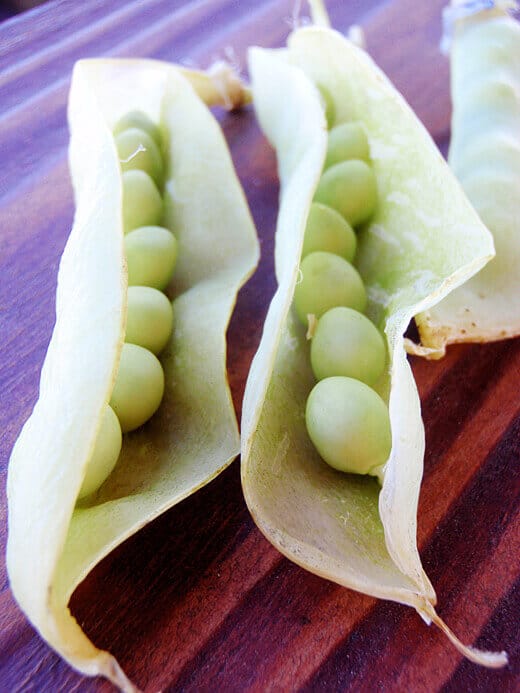It seemed like only yesterday that my Golden Sweet snow peas were thriving and producing handfuls of bright, translucent yellow pods that intertwined up my six-foot trellis. And then today, the vines have withered… the tiny buds no longer flowering… all the plants have just naturally collapsed under the weight of their saggy, unripened pods, still clinging on by threadbare stems. It’s the end of life for these short-season annuals.
I picked off the last few mature snow peas, which now looked dehydrated and sunken. The calyxes (those little flower “hats” on top) were brown and thin. Splitting the delicate pods revealed a row of perfectly-nestled peas inside.
Peas are some of the simplest seeds to save — no digging through pulp, no washing, no hanging upside-down to shake out later. I collected 20 large pods and spread them out in a dish to dry (even if you picked peas off a dead plant, humidity from the garden can still collect inside the pods). It may take a week or two for the peas to shrivel up and harden.
To test if the peas are fully dry, gently drop them onto a solid surface and listen for a nice clack. Gather the seeds into a paper coin envelope, date them, and store them in an airtight container in the coldest place in your house, usually the refrigerator.
My ideal seed storage would be a dedicated refrigerator shelf lined with glass jars with little packets neatly tucked inside. But with year-round harvests already fighting for space with supermarket goods, I have to settle for the second-coldest place in my house: my walk-in closet. Something about that room makes it 10 degrees colder than everywhere else. Not to mention it’s dry, dark and consistently cool… I may have to steal a couple of my boyfriend’s closet shelves for all the seeds I plan to save this season!















